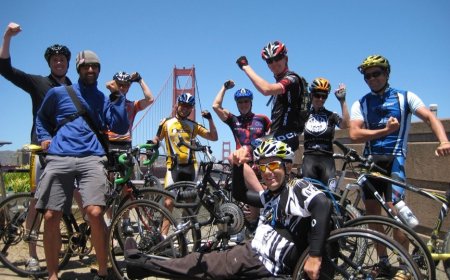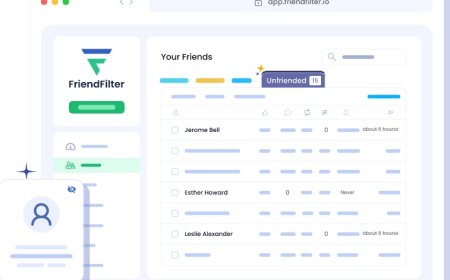How To Health Fair SMU Campus
How to Organize a Health Fair on the SMU Campus Organizing a health fair on the Southern Methodist University (SMU) campus is more than just a one-day event—it’s a strategic initiative that promotes wellness, fosters community engagement, and supports the university’s commitment to student well-being. A well-planned health fair can reach hundreds of students, faculty, and staff, offering vital ser
How to Organize a Health Fair on the SMU Campus
Organizing a health fair on the Southern Methodist University (SMU) campus is more than just a one-day event—it’s a strategic initiative that promotes wellness, fosters community engagement, and supports the university’s commitment to student well-being. A well-planned health fair can reach hundreds of students, faculty, and staff, offering vital services such as free screenings, mental health resources, nutrition counseling, vaccination clinics, and fitness demonstrations. In today’s fast-paced academic environment, where stress, sleep deprivation, and poor nutrition are common, health fairs serve as critical touchpoints for preventive care and health education.
Unlike commercial health events, a campus-based health fair must align with university values, comply with institutional policies, and meet the unique needs of a young, diverse, and academically driven population. This guide provides a comprehensive, step-by-step roadmap to planning, executing, and evaluating a successful health fair at SMU. Whether you’re a student leader, a staff member in Student Affairs, or a faculty sponsor, this tutorial equips you with the knowledge, tools, and best practices to create an impactful, sustainable event that resonates with the SMU community.
Step-by-Step Guide
Phase 1: Define Objectives and Scope
Before securing venues or contacting vendors, clearly articulate the purpose of your health fair. Objectives should be specific, measurable, achievable, relevant, and time-bound (SMART). For example:
- Increase student awareness of mental health resources by 40% within one semester
- Provide free flu vaccinations to at least 300 students and staff
- Distribute 500 nutrition and sleep hygiene guides
Identify your target audience: Are you focusing on undergraduate students, graduate students, international students, or faculty? Each group has distinct health concerns. Undergraduates may need stress management and sleep support, while graduate students might benefit from ergonomic assessments and chronic pain prevention. International students may require culturally competent health education and immunization compliance guidance.
Decide on the scope: Will your fair be a single-day event during midterms, a week-long wellness series, or a recurring quarterly initiative? A single-day fair is easier to manage but may limit reach. A multi-day format allows for deeper engagement but requires more coordination.
Phase 2: Assemble a Planning Team
A successful health fair requires cross-functional collaboration. Form a core planning committee with representatives from:
- Student Affairs
- Health Services (SMU Health Center)
- Student Organizations (e.g., Pre-Med Society, Public Health Club)
- Recreation and Wellness Center
- Office of Diversity and Inclusion
- Marketing and Communications
- Facilities Management
Assign clear roles: a project manager, logistics coordinator, vendor liaison, communications lead, and volunteer coordinator. Hold weekly planning meetings with agendas and action items tracked via shared digital tools like Google Sheets or Trello. Ensure all team members understand SMU’s event approval protocols and compliance requirements.
Phase 3: Secure University Approval and Permits
All campus events must be approved through SMU’s official event management system. Begin this process at least 8–10 weeks in advance. Submit a detailed proposal including:
- Event name, date, time, and location
- Expected attendance
- List of participating organizations and vendors
- Health and safety protocols
- Contingency plan for inclement weather or emergencies
- Insurance documentation (if applicable)
Key departments to coordinate with include:
- Event Services – for space reservation (e.g., Hughes-Trigg Student Center, Mall, or outdoor courtyard)
- Public Safety – for crowd control and emergency response planning
- Facilities – for power, signage, trash removal, and restroom access
- Legal Affairs – to review liability waivers or consent forms for health screenings
Ensure all vendors (e.g., blood pressure machines, mobile dental units) are pre-approved and comply with university health and safety standards. If you plan to distribute food or beverages, coordinate with Dining Services to meet Texas Department of State Health Services guidelines.
Phase 4: Identify and Recruit Partners
Health fairs thrive on partnerships. Reach out to local healthcare providers, nonprofits, and academic departments. Potential partners include:
- SMU Health Center – for basic screenings (BP, glucose, BMI)
- UT Southwestern or Methodist Hospital – for specialized services like dermatology or eye exams
- American Red Cross – for blood donation drives
- Local mental health nonprofits – for counseling sessions and resource distribution
- SMU Cox School of Business – for financial wellness workshops
- SMU Athletics – for fitness demos and injury prevention tips
- Student-run organizations – like the Nutrition Club or Yoga Society
When approaching partners, clearly communicate the benefits: exposure to a captive, health-conscious audience; brand alignment with SMU’s values; and potential for long-term collaboration. Offer promotional opportunities such as branded booths, social media shoutouts, and inclusion in official event materials.
Phase 5: Plan Services and Activities
Design a balanced mix of services that address physical, mental, and social health. Avoid overloading the event with too many medical screenings; instead, prioritize high-impact, low-barrier offerings. Consider these categories:
Physical Health
- Free blood pressure, glucose, and cholesterol screenings
- Flu, COVID-19, and HPV vaccinations
- Dental hygiene kits and oral health consultations
- Body composition analysis and posture assessments
- On-site vision screening
Mental and Emotional Health
- Stress management workshops (mindfulness, breathing techniques)
- One-on-one counseling sessions with licensed therapists
- Anonymous mental health self-assessments with immediate resource referrals
- Art therapy or journaling stations
Nutrition and Lifestyle
- Healthy snack sampling (e.g., fruit, nuts, granola bars)
- Dietitian-led “Build a Balanced Plate” demonstrations
- Hydration station with infused water and electrolyte info
- “Sleep Hygiene 101” booth with sleep tracker giveaways
Preventive and Educational
- Condom and sexual health education distribution
- Firearm safety and safe storage information (if relevant)
- Substance use prevention and harm reduction resources
- Financial wellness: budgeting tools and student loan counseling
Include interactive elements: a “Wellness Bingo” card with stations to visit, a photo booth with health-themed props, or a raffle for wellness gift baskets. These increase engagement and encourage attendees to explore multiple services.
Phase 6: Promote the Event
Effective promotion is critical to maximizing attendance. Use a multi-channel strategy:
- SMU Email Lists – Send targeted messages through student, faculty, and staff listservs
- SMU Mobile App – Utilize the official app’s event calendar and push notifications
- Social Media – Create a branded hashtag (
SMUHealthFair2024), post countdowns, behind-the-scenes videos, and testimonials from past attendees
- Posters and Flyers – Place in high-traffic areas: libraries, dining halls, residence halls, and the Student Union
- Classroom Announcements – Partner with professors to mention the event at the start of class
- Student Organizations – Ask clubs to promote the event to their members
- Residence Life – Coordinate with RA teams to distribute flyers and host mini-events in dorms
Highlight accessibility: Include information about ADA compliance, multilingual resources, and transportation options. Emphasize that all services are free and no appointment is needed.
Phase 7: Logistics and Day-of Execution
One week before the event, conduct a full walkthrough with all vendors and volunteers. Confirm:
- Booth locations and power access
- Signage placement (directional and informational)
- Supply delivery schedules (tables, chairs, tents, hand sanitizer, pens, clipboards)
- Volunteer shift assignments and training
- Emergency contact list and first aid station location
On event day, arrive early. Set up signage, test AV equipment, and ensure all vendors have what they need. Assign greeters at entry points to welcome attendees, hand out maps, and answer questions. Volunteers should be trained to direct people to services, manage lines, and collect feedback.
Ensure food and water are available for staff and volunteers. Provide a quiet, private room for counseling sessions and medical consultations. Monitor crowd flow to avoid bottlenecks. Use a digital check-in system (e.g., QR code scan) to track attendance and gather consent for follow-up surveys.
Phase 8: Collect Feedback and Measure Impact
Post-event evaluation is essential for continuous improvement. Deploy a short, anonymous survey via email and QR code at exit points. Ask:
- Which services did you use?
- How helpful were they?
- What did you learn?
- Would you attend again?
- What improvements would you suggest?
Track quantitative metrics:
- Total number of attendees
- Number of screenings conducted
- Vaccinations administered
- Resources distributed
- Social media reach and engagement
Compile a report for SMU administration and partners. Include testimonials, photos, and data visualizations. Share results on SMU’s wellness website and in newsletters to build momentum for future events.
Best Practices
1. Prioritize Accessibility and Inclusivity
Design your fair to be welcoming to all students, regardless of background, ability, or identity. Ensure venues are ADA-compliant. Offer materials in multiple languages, especially Spanish and Mandarin, given SMU’s diverse student body. Train staff to be culturally sensitive and avoid assumptions about health behaviors. Include LGBTQ+ affirming resources and gender-neutral restrooms.
2. Minimize Barriers to Participation
Many students avoid health services due to stigma, cost, or time constraints. Make your fair free, no-appointment-needed, and located in a central, familiar space. Offer incentives: free water bottles, reusable tote bags, or gift cards to campus dining. Schedule the event during low-academic-pressure times (e.g., early spring or late fall) rather than during finals week.
3. Integrate Technology
Use digital tools to streamline operations. Implement a registration system like Eventbrite or Google Forms for pre-signups (optional). Use QR codes to link attendees to online mental health resources, SMU Health Center portals, or wellness apps. Consider a mobile app or interactive map for the fair itself, showing booth locations and wait times.
4. Build Sustainability
Don’t treat the health fair as a one-off. Create a “Wellness Week” framework that rotates focus areas each semester: mental health in October, nutrition in February, sexual health in April. Partner with academic departments to offer credit-bearing workshops or service-learning opportunities. Turn the fair into a recurring tradition that students look forward to.
5. Emphasize Confidentiality and Privacy
Health information is sensitive. Ensure all screenings and counseling sessions occur in private or semi-private booths. Use secure digital forms for data collection. Never share individual results without consent. Train volunteers on HIPAA basics and data protection protocols.
6. Leverage Student Voices
Students are more likely to engage with peers. Recruit student ambassadors to promote the event, staff booths, and share their own wellness journeys. Feature student testimonials in promotional materials. Host a “Student Wellness Panel” during the fair where peers discuss overcoming stress, managing chronic illness, or finding balance.
7. Align with University Strategic Goals
SMU’s strategic plan emphasizes holistic student development and community health. Frame your health fair as a direct contribution to these goals. Reference SMU’s “Healthy Campus Initiative” or “Student Success Framework” in your proposals and reports. This increases institutional support and funding opportunities.
8. Plan for Weather and Contingencies
If hosting outdoors, have a rain plan. Reserve an indoor backup space. Prepare for power outages with battery-powered lights and printed maps. Have a medical emergency protocol in place with trained staff and access to AEDs. Always notify Public Safety of your event details.
Tools and Resources
Planning and Coordination
- Google Workspace – For shared calendars, documents, and forms
- Trello or Asana – To track tasks and deadlines
- Eventbrite – For optional registration and attendance tracking
- Canva – For designing flyers, social media graphics, and signage
Health Screening and Data Collection
- MedPro – For managing vaccination records and consent forms
- Qualtrics – For creating professional surveys
- Tableau – For visualizing event impact data
Marketing and Outreach
- SMU Communications Toolkit – Official brand guidelines and templates
- Hootsuite – To schedule social media posts
- Mailchimp – For email campaigns to student lists
Partnership and Funding
- SMU Foundation – Apply for wellness grants
- Local Health Departments – May provide free screening supplies or staff
- Corporate Wellness Sponsors – Companies like Humana, UnitedHealthcare, or local pharmacies may sponsor booths
- Student Activity Fees – Request allocation through Student Government
Free Educational Resources
- Centers for Disease Control and Prevention (CDC) – Downloadable health fact sheets
- National Institute of Mental Health (NIMH) – Mental health brochures and toolkits
- American Heart Association – Blood pressure and nutrition guides
- SMU Health Center Website – Existing campus resources and referrals
- Active Minds – Mental health advocacy materials for college campuses
Volunteer Management
- VolunteerMatch – To recruit campus volunteers
- SMU Volunteer Portal – For tracking service hours
- Training Videos – Create 5-minute orientation videos on confidentiality, communication, and booth etiquette
Real Examples
Example 1: SMU Health Fair 2023 – “Mind, Body, and Balance”
In spring 2023, the SMU Student Health Advisory Board organized a health fair with 18 partners and over 1,200 attendees. The event featured:
- A mobile dental van from the Texas Dental Association
- Free mental health screenings using the PHQ-9 and GAD-7 tools
- A “Yoga on the Mall” session led by SMU Recreation
- Healthy smoothie samples from SMU Dining
- A “Stress Ball Making” station
Promotion included a TikTok challenge where students shared their self-care routines. Post-event surveys showed 87% of attendees learned something new, and 72% said they were more likely to visit the SMU Health Center in the future. The event was so successful it became an annual tradition.
Example 2: International Student Wellness Day
In 2022, SMU’s Office of International Student Services partnered with the Health Center to host a culturally tailored wellness day. Services included:
- Health literacy workshops in Mandarin, Arabic, and Spanish
- Traditional medicine consultations (acupuncture, herbal remedies)
- Information on navigating U.S. healthcare systems
- Free toiletries and hygiene kits for students in need
The event addressed unique challenges faced by international students: language barriers, cultural stigma around mental health, and unfamiliarity with campus resources. Attendance increased by 200% compared to the previous year. Feedback highlighted the importance of multilingual staff and culturally familiar visuals.
Example 3: “Take a Break” Midterm Wellness Fair
During finals week in December 2023, the SMU Counseling Center hosted a pop-up fair in the library atrium. Services included:
- 5-minute guided meditation sessions
- Free tea and hot cocoa
- “Write It Down” journaling stations
- Massage chairs provided by a local wellness spa (as a sponsor)
This low-cost, high-impact event required minimal setup and reached 450 students in just three hours. It demonstrated that even small, timely interventions can make a significant difference during high-stress periods.
FAQs
Q1: Do I need medical licenses to host health screenings at the fair?
Yes. Any clinical service (e.g., blood draws, blood pressure readings, vaccinations) must be performed by licensed professionals or under the supervision of a certified provider. SMU Health Center staff can assist with this. Non-clinical services like nutrition education or fitness demos do not require licenses.
Q2: Can I charge for any services at the fair?
No. The goal of a campus health fair is to remove financial barriers. All services should be free. However, you may offer optional donations to support partner organizations, as long as participation is not contingent on payment.
Q3: How do I get funding for supplies and giveaways?
Apply for funding through SMU Student Government, the SMU Foundation, or partner organizations. Many health nonprofits and pharmaceutical companies provide free educational materials and samples for campus events. Be sure to include a budget in your event proposal.
Q4: What if no one shows up?
Promotion is key. If turnout is low, analyze your outreach: Did you use the right channels? Was the timing inconvenient? Did your messaging resonate? Use feedback to improve next time. Even 100 engaged attendees can make a meaningful impact.
Q5: Can I include alternative medicine providers?
Yes, as long as they are licensed and their services are evidence-informed. Acupuncturists, licensed massage therapists, and certified yoga instructors are welcome. Avoid vendors promoting unproven or pseudoscientific treatments.
Q6: How do I handle sensitive health data collected at the fair?
Store data securely and only use it for aggregate reporting. Do not collect names unless consent is explicitly given. Use anonymous identifiers. Destroy paper forms after data entry. Follow SMU’s data privacy policies and HIPAA guidelines where applicable.
Q7: Can I host the fair during finals week?
It’s possible, but not ideal. Students are overwhelmed. Choose a time with lower academic pressure, like early spring or the beginning of the semester. If you must host during finals, focus on low-effort, high-reward services like meditation, snacks, and stress-relief tools.
Q8: How do I involve faculty?
Invite professors to recommend the fair in class, offer extra credit for attendance, or host a mini-workshop. Faculty endorsement increases credibility and encourages student participation.
Conclusion
Organizing a health fair on the SMU campus is a powerful way to demonstrate institutional care, empower students with knowledge, and create a culture of wellness that extends beyond the event day. The process requires careful planning, collaboration, and a deep understanding of your audience’s needs—but the returns are immeasurable. Students who attend a health fair are more likely to seek help when they need it, adopt healthier habits, and feel connected to their campus community.
By following the steps outlined in this guide—from defining clear objectives and securing university approvals to promoting inclusively and evaluating impact—you can create a health fair that doesn’t just inform, but transforms. Remember: wellness is not a one-time event. It’s a continuous journey. Your health fair is not the destination—it’s the first step.
Start small if you must, but start now. Reach out to a professor, a student group, or the Health Center today. Gather your team. Choose a date. Design a booth. You don’t need a big budget to make a big difference. All you need is intention, compassion, and the courage to act.
The SMU community is waiting. And so are your students.




































